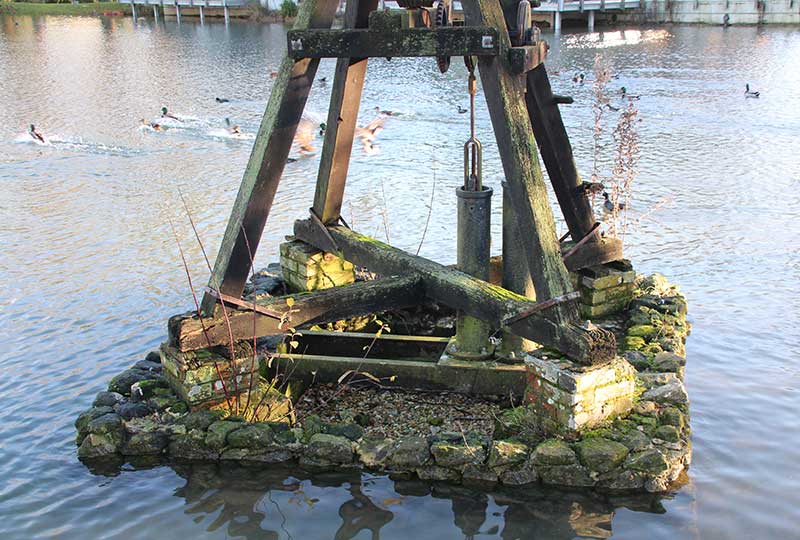
The Pevensey windpump came from an old clay pit near Pevensey and Westham Station. This is a rare survival of a wooden windpump, a type which must have been quite common before the introduction of the more familiar American steel windpump, which in its turn has now almost vanished from the countryside.
An engraving entitled ‘Sussex Brickfield Pump’, published in 1881, shows a windpump identical with the Pevensey example, and it is clear that there must have been many in the local landscape. Now perhaps three remain in south-east England.
Share
Overview
Dates From
Late 19th century
Dismantled
1972
Reconstructed
1975
Original Location
Pevensey, Sussex
History
Background Information
The upper part of the structure carrying the sails is supported on a centre-post held upright by sloping ‘quarter bars’. The body of the mill turns on this centre-post to face the sails into the wind. This is done automatically by a large rudder projecting at the tail.
The sails, fixed to an iron cross on the front of the windshaft, are of the type known as ‘common sails’, in which canvas is stretched over a wooden frame. On some windpumps — at Glynde, for example — boards were used instead of sails.

Elevation and section of the windpump.
Power is transmitted from the sails and the windshaft to a vertical iron rod by cast-iron bevel gears. The iron rod passes down the hollow centre-post and, with another pair of bevel gears, drives a horizontal shaft below the post. On this shaft are fixed two eccentrics, which drive pump rods to cast-iron simple lift pumps, made by Thompson of Lewes. These are situated below the mill structure.

Top 3 Interesting Facts

A Rare Survival
This wooden wind-powered pump is a rare survival of a feature that was once fairly common in the countryside.

Keep the Sails Turning
Maintenance is required for all working museum exhibits, often using craftspeople very skilled in understanding machinery or structures.

Green Energy
Capturing the power of the elements is an old idea, as also shown at the Museum by the Lurgashall Watermill.







